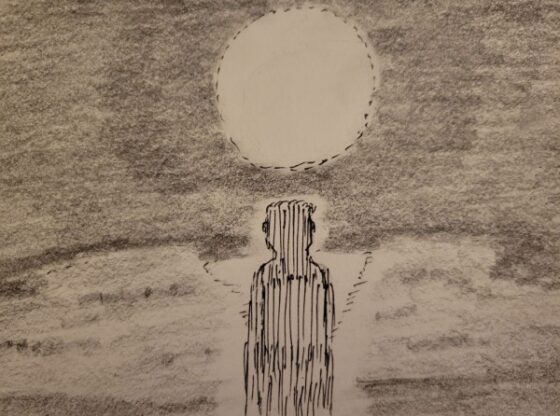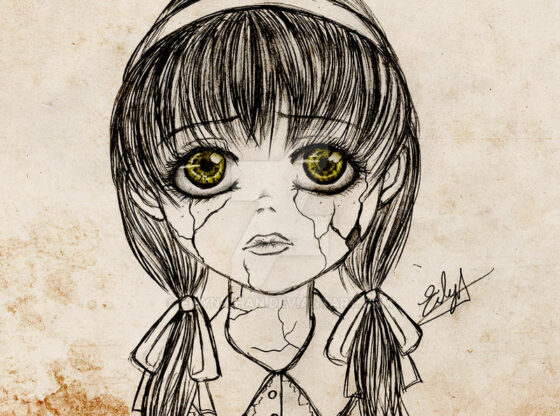Jim Amoss, editor of the Times- Picayune in New Orleans, received the Anvil of Freedom Award last Tuesday in recognition of his contribution to democracy through journalism during Hurricane Katrina and its aftermath.
The Estlow International Center for Journalism and New Media at DU presented Amoss with the award for his role in continuing to produce the newspaper throughout the storm and for helping to keep New Orleans on the national and international agenda by exposing the failures of FEMA and the U.S. Army Corps of Engineers.
The Times-Picayune won two Pulitzer prizes for its coverage of Hurricane Katrina, one for public service, the other for breaking news.
About 50 students, faculty and editors from both the Rocky Mountain News and the Denver Post attended the event on a blustery and rainy night.
In accepting the award, Amoss spoke about his and his staff’s experiences during the hurricane and how the advantages of being a local newspaper helped the Times-Picayune uncover man-made failures that led to the flooding and subsequent evacuation of New Orleans, the largest natural disaster in American history.
Amoss also was a guest in a journalism class and spoke at a workshop earlier that day where he discussed the ethical dilemmas faced by journalists during disasters.
“Democracy is never so endangered or the press so essential” than during a disaster such as Hurricane Katrina or 9/11, said Amoss. While many other newspapers and broadcast media were reporting that Louisiana had “dodged a bullet,” the Times-Picayune was telling a vastly different story.
“Our paper told a different story, for we knew our backyard,” said Amoss.
The morning after Katrina hit, Amoss was informed that everyone in the Times-Picayune building would have to evacuate or face being trapped by rising waters as the storm surge breached the levees. Staff members and their families climbed into newspaper delivery trucks that eventually ended up in Baton Rouge.
However, 16 volunteer reporters returned to New Orleans to continue covering the disaster and take photographs. It would have been a “mark of shame forever” had the Times-Picayune stopped printing, said Amoss. During the first two days after the storm hit, the newspaper was produced in full pages online.
The journalists who returned to New Orleans faced various ethical dilemmas because the disaster wasn’t one of distance, but one occurring in their own hometown.
“As journalists,” said Amoss, “we are taught to be observers, not participants, yet the story we are covering is also our story. The shoddily built levees threatened our lives.”
“What is the ethical responsibility of a journalist” in a life-or-death situation, asked Amoss. Are reporters and photographers supposed to help rescue people or continue doing their job and take photographs of houses being submerged under rising levels of water?
For the journalists who returned to the flooded city, journalistic ethics became a significant issue when they came across a major looting occurring at a Wal-Mart. Some of the journalists entered the store and took food and water, necessities for survival.
But, by taking the items, they were being looters themselves, Amoss pointed out. After considering what was the right thing to do, the journalists returned the water and the food and left the store.
Amoss quoted the Times-Picayune’s city editor David Meeks, who argued that the reporters could not take the water and food: “If we take this stuff, we are making ourselves part of this story and can no longer write about it.”
“In the end, you are relying on people being moral, ethical human beings” and journalists, said Amoss.
In the aftermath of Katrina, questions arose on what could have been done to prevent the hurricane’s catastrophic consequences and whether or not race was an issue in delay in evacuating stranded people.
The Times-Picayune continues to cover these issues. “A good newspaper probes into those stories,” even when the natural instinct is to shy away, said Amoss.
Through investigative reporting done by some of the reporters, the newspaper discovered that the U.S. Army Corps of Engineers had made a fatal construction error in its anti-flooding canals and levees and finally convinced the Corps to admit its mistake.
Amoss blamed the Corps of Engineers for the flooding, calling the agency inept and incompetent. Katrina was the “worst civil engineering disaster in our nation’s history,” he said.
In the 1990s, the Corps built anti-flood structures in New Orleans. During Hurricane Katrina, the walls of these structures collapsed. The Times-Picayune discovered that the metal sheets holding the walls into the ground had not been dug deep enough and sat on sand. They collapsed under the pressure of rising water.
The disaster that followed was the result of an “amazing confluence of local, state and federal ineptitude,” said Amoss.
Henry Butler, a blind New Orleans’ jazz pianist, played in the evening in Hamilton Recital Hall. His lively melodies and laugh-provoking comments brought a small taste of New Orleans to the Newman Center. Music, Butler said, is “one of the great things [New Orleans] has given to the world.”
Greg Moore, editor of The Denver Post, was also in attendance. He praised the reporting by the Times-Picayune that is keeping Katrina on the “front burner.” The Times-Picayune staff “truly showed courage under fire,” he said.
Today, said Amoss, New Orleans is a “city in recovery.”
Lynn Clark, the director of the Estlow Center, organized the event.










